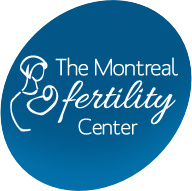Screening of Embryos using Non-Invasive Analysis of Embryo Culture Media
It is normal for egg quality and embryo quality to decline with age. This is primarily due to chromosomal errors (aneuploidy), e.g. trisomy 21.
The table below demonstrates how the percentage of blastocysts (day 5+ embryos) with aneuploidy increases with age:
|
Female Age |
Percentage of Blastocysts that are Aneuploid |
|
26-30 |
25% |
|
30-34 |
30% |
|
35-36 |
35% |
|
37-38 |
45% |
|
39-40 |
55% |
|
41-42 |
75% |
|
43-44 |
85% |
Franasiak et al, Fertil Steril 2014
Technology now exists to examine the culture media in which your blastocysts have been grown to determine if they are likely to have the correct number of chromosomes or not.
Unlike more traditional embryo biopsy, this testing is non-invasive, does not harm the embryo and does not require repetitive thawing and freezing of embryos when performing testing coupled with embryo banking.
Please note that recent research from Harvard published in the Proceedings of the National Academy of Sciences (Huang et al. 2019) suggests that this testing may be more accurate than traditional embryo biopsy, and that it can detect over 90% of abnormal embryos and can accurately recognize over 80% of normal embryos.
Please note that:
- This technology can only be done on embryos that are taken to the blastocyst stage
- Not all embryos, and sometime no embryos, reach the blastocyst stage
- Embryos that reach the blastocyst stage must be frozen while the media is processed
- There is a small chance that the media may not contain enough DNA for analysis
- The analysis may not provide an accurate result
- Any given blastocyst may or may not survive the freeze/thaw process
It is important to recognize that this testing does not guarantee a healthy live birth. What it does do, however, is increase the chance that you will identify the best embryo(s) for transfer.
This then increases the chance of implantation, lowers the risk of miscarriage and may shorten the time required to achieve a live birth.
In general, the live birth rate after transfer of a chromosomally normal blastocyst is 50% or better, and this success rate is independent of female age.
Please note that the costs of this testing include:
- The cost of IVF-ICSI with individual micro-droplets of culture media ($7,500)
- The cost of embryo freezing ($1,000)
- The cost of embryo culture media analysis ($2,500)
Hence the total cost for an IVF-ICSI cycles with this testing is $11,000.
Please then note that the cost of each resulting frozen-thaw blastocyst transfer is $1,500. Thus, the total cost to reach the 1st transfer is $12,500.
